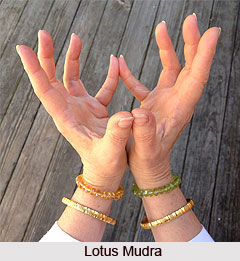“THE ERUPTION OF HELMET HEADS” (FUNNY BOSSES AND
MANAGEMENT HUMR) the author is drawing his readers attention
towards “HUMOR AT THE WORK PLACE”.
The life is what we make it.
This book is a masterclass in how to defy a boring world with mischief.
Some funny story which taught Business Morals and Ethics.
Check out now -
Lesson 1: Naked Wife
A man is getting into the shower just as his wife is finishing up her shower when the doorbell rings. The wife quickly wraps herself in a towel and runs downstairs. When she opens the door, there stands Bob, the next-door neighbour. Before she says a word, Bob says, “I’ll give you $800 to drop that towel.” After thinking for a moment, the woman drops her towel and stands naked in front of Bob.
After a few seconds, Bob hands her $800 dollars and leaves. The woman wraps back up in the towel and goes back upstairs. When she gets to the bathroom, her husband asks,
“Who was that?” “It was Bob the next-door neighbour,” she replies. “Great!” the husband says, “Did he say anything about the $800 he owes me?”
Moral of the story:
If you share critical information pertaining to credit and risk with your shareholders in time, you may be able to prevent avoidable exposure.
Lesson 2
A sales rep, an administration clerk, and the manager are walking to lunch when they find an antique oil lamp. They rub it and a Genie comes out. The Genie says, “I’ll give each of you just one wish” “Me first! Me first!” says the admin. clerk. “I want to be in the Bahamas, driving a speedboat, without a care in the world.” Poof! She’s gone. “Me next! Me next!” says the sales rep. “I want to be in Hawaii, relaxing on the beach with my personal masseuse, an endless supply of Pina Coladas and the love of my life.” Poof! He’s gone. “OK, you’re up,” the Genie says to the manager. The manager says, “I want those two back in the office after lunch.”
Moral of the story: Always let your boss have the first say.
A sales rep, an administration clerk, and the manager are walking to lunch when they find an antique oil lamp. They rub it and a Genie comes out. The Genie says, “I’ll give each of you just one wish” “Me first! Me first!” says the admin. clerk. “I want to be in the Bahamas, driving a speedboat, without a care in the world.” Poof! She’s gone. “Me next! Me next!” says the sales rep. “I want to be in Hawaii, relaxing on the beach with my personal masseuse, an endless supply of Pina Coladas and the love of my life.” Poof! He’s gone. “OK, you’re up,” the Genie says to the manager. The manager says, “I want those two back in the office after lunch.”
Moral of the story: Always let your boss have the first say.
Lesson 3
A priest offered a lift to a Nun. She got in and crossed her legs, forcing her gown to reveal a leg. The priest nearly had an accident. After controlling the car, he stealthily slid his hand up her leg. The nun said, “Father, remember Psalm 129?” The priest removed his hand. But, changing gears, he let his hand slide up her leg again. The nun once again said, “Father, remember Psalm 129?” The priest apologized “Sorry sister but the flesh is weak.” Arriving at the convent, the nun went on her way. On his arrival at the church, the priest rushed to look up Psalm 129. It said, “Go forth and seek, further up, you will find glory.”
Moral of the story: If you are not well informed in your job, you might miss a great opportunity.
A priest offered a lift to a Nun. She got in and crossed her legs, forcing her gown to reveal a leg. The priest nearly had an accident. After controlling the car, he stealthily slid his hand up her leg. The nun said, “Father, remember Psalm 129?” The priest removed his hand. But, changing gears, he let his hand slide up her leg again. The nun once again said, “Father, remember Psalm 129?” The priest apologized “Sorry sister but the flesh is weak.” Arriving at the convent, the nun went on her way. On his arrival at the church, the priest rushed to look up Psalm 129. It said, “Go forth and seek, further up, you will find glory.”
Moral of the story: If you are not well informed in your job, you might miss a great opportunity.
Naturally, the higher you are in the management hierarchy, the more you are suitable for a funny take.
Let go of
inhibitions. Laughter opens
us up, freeing us to express what we truly feel and allowing our deep, genuine
emotions to rise to the surface.
https://www.amazon.in/ERUPTION-HELMET-HEADS-BOSSES-MANAGEMENT-ebook/dp/B0789RYPBJ/ref=sr_1_1?ie=UTF8&qid=1534142654&sr=8-1&keywords=The+eruption+of+helmet+heads

















